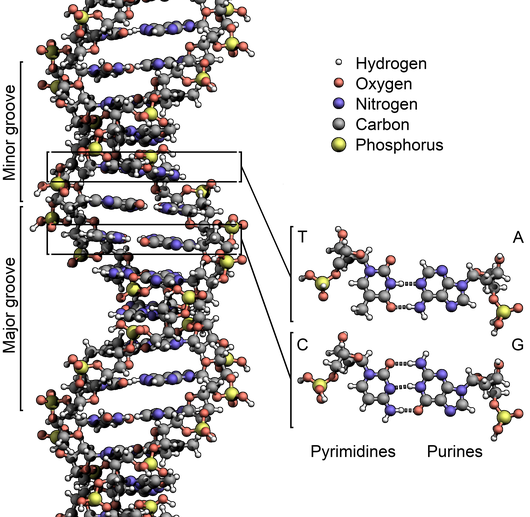Science News
& Faculty Articles
The Last Previously Un-Decipherable Regions of the Human Genome have been Successfully Resolved

By: William Brown, Biophysicist at the Resonance Science Foundation
The Telomere-to-Telomere Consortium has completed a 3.055 billion-base pair sequence of a human genome, including complete sequencing of all centromeric satellite arrays, recent segmental duplications, and the short arms of all five acrocentric chromosomes, unlocking these hitherto un-resolved regions to variational and functional studies [1]:
"Mapping this genetic material should help explain how humans adapted to and survived infections and plagues, how our bodies clear toxins, how individuals respond differently to drugs, what makes the brain distinctly human and what makes each of us distinct, said Evan Eichler, a geneticist at the University of Washington School of Medicine who helped lead the research." [2]

Each bar is a linear visualization of a chromosome, with the chromosome number shown at left. Red segments denote previously missing sequences that the T2T Consortium resolved. GRAPHIC: V....
More Evidence of Quantum Behavior at Biological Scale: Proton Tunneling in DNA

By Dr. Inés Urdaneta / Physicist at Resonance Science Foundation
Former RSF articles had addressed quantum effects that have been observed in biology, more precisely, in the microtubules, giving plausible support to the fact that biology, just as consciousness, could have a quantum origin.
Now, a paper published in the journal Communications Physics, entitled An open quantum systems approach to proton tunnelling in DNA, is shedding light on the physical mechanisms that might cause the protons to jump across between the DNA strands.
The DNA strands usually depicted as two double helices, are composed of molecules named nucleotides, which organize in two strains to form each of the helices, as depicted below:

Figure 1: DNA strands composed of nucleotides or molecules Thymine (T), Adenine (A), Guanine (G) and Cytosine (C), which organize creating a double helix. Image source : SeekPNG.com
To study such proton transfer, the authors analyzed...



